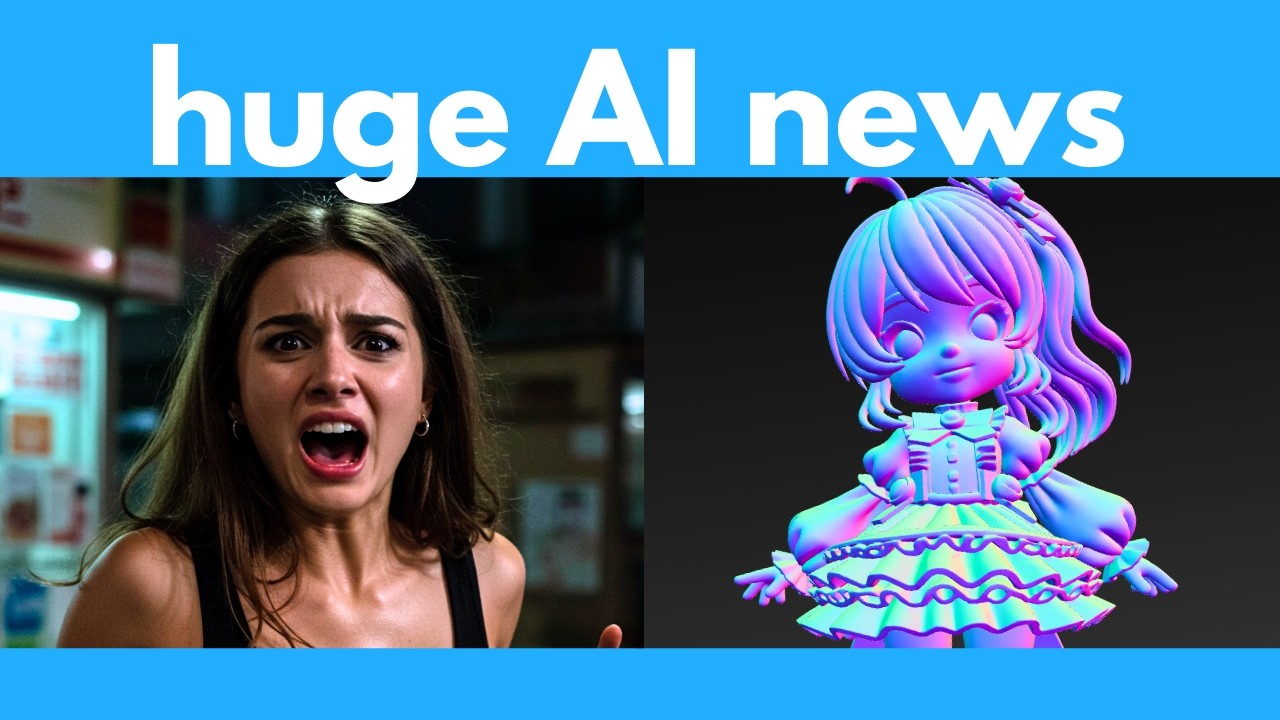The video showcases recent advancements in AI technology, including open-source tools like Live CC for real-time video commentary, Reflection Flow for refined image generation, and Uni3C for controlled video creation, alongside Tencent’s powerful 3D model generator, Hunyan 3D 2.5. It also highlights new text-to-speech models like DIA 1.6B for voice cloning, emphasizing rapid progress and accessibility across AI-generated video, image, and speech content.
The video highlights several groundbreaking developments in AI technology released this week, focusing on open-source tools and innovative models. One of the most impressive is Live CC, an AI that can watch videos and generate real-time commentary, such as sports announcers or instructional videos. Trained on sports footage and transcripts, it produces accurate voiceovers in real-time, with the potential to replace human commentators once more expressive voice models are integrated. The AI’s code, models, and training data are openly available on HuggingFace and GitHub, making it accessible for further experimentation.
Another major advancement is Reflection Flow, a plugin for Flux1Dev, which enhances AI image generation by iteratively reasoning and refining images until they match the input text prompts more accurately. It generates multiple images in parallel, then refines or adjusts them through multiple reflection cycles, improving detail and correctness, especially for complex prompts. This process involves using an external language model to enhance prompts and refine images, resulting in higher quality outputs. The tool is open-source, with instructions available for local deployment, though it requires significant computational resources.
Tencent’s Hunyan 3D 2.5 is introduced as the best 3D model generator to date, accessible via their online platform. It allows users to generate detailed 3D models from text prompts or by uploading multiple images from different angles. The platform produces highly realistic models, such as detailed characters with accurate textures and lighting, and even predicts unseen views like the back of a character. While the model isn’t yet open-source, previous versions are, and the current iteration is expected to be released for local use soon, offering powerful capabilities for creators and developers.
The video also covers Uni3C, an AI that enables precise control over video creation by manipulating camera movements and character motions. It can generate videos from a single image or reference video, allowing users to specify camera trajectories and animate characters accordingly. The process involves converting scenes into 3D point clouds and mapping movements onto characters, with the potential for highly cinematic outputs. Although the full code isn’t yet available, the tool demonstrates significant promise for producing complex, controlled videos with minimal effort.
Finally, the video discusses new text-to-speech models like DIA 1.6B by Nari Labs, which can clone voices and generate natural speech from transcripts. While the technology shows impressive potential, initial tests reveal that the output often sounds robotic or inconsistent, especially when cloning voices from short clips. The models are open-source and available on GitHub and HuggingFace, but current results suggest they still need refinement before matching the realism of commercial solutions like 11 Labs or Sesame. Overall, the week has seen a surge of innovative AI tools across video, image, and speech domains, emphasizing open-source accessibility and rapid progress in AI-generated content.
